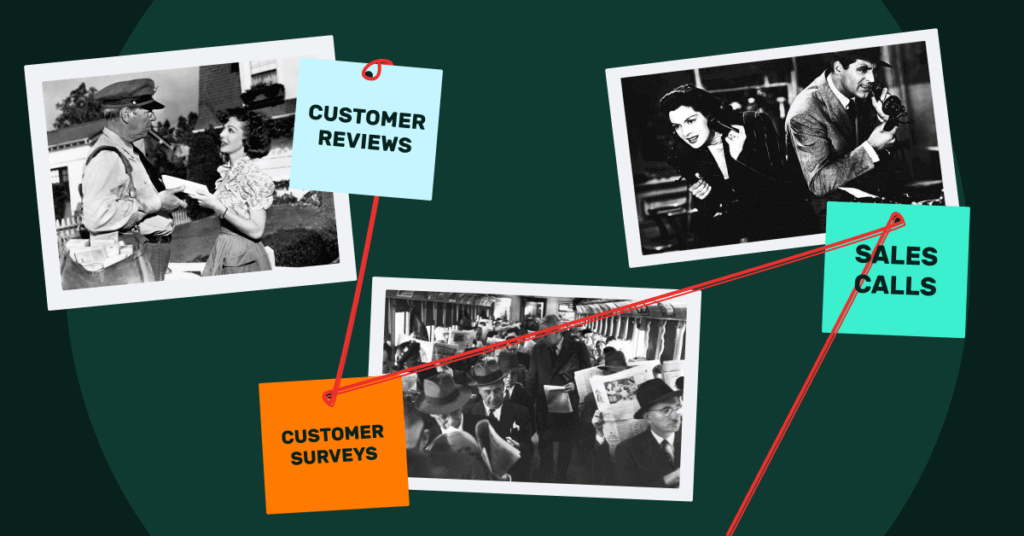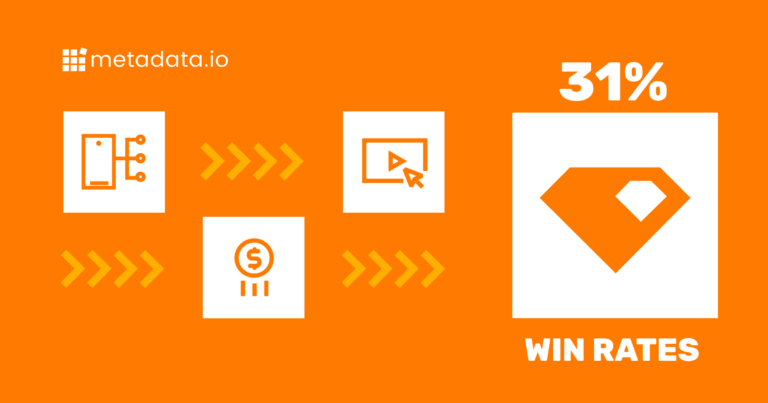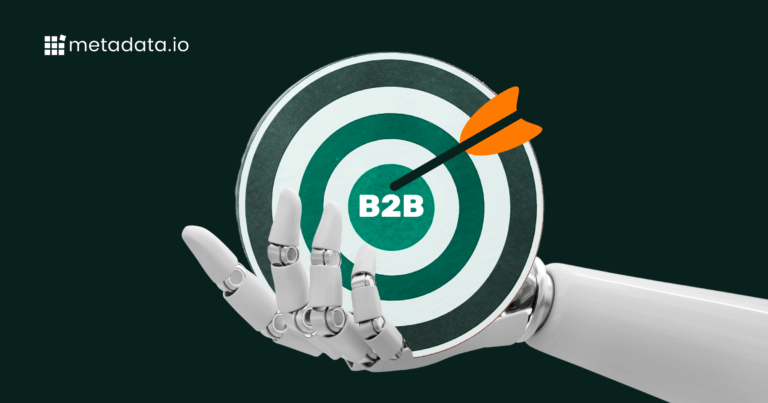How to Launch Software Products: Part I
What recruiters see when they fly through my LinkedIn profile: an MBA.
What I actually have: A Master’s Degree in Elementary Education.
That’s right, fam. I spent 7 total years in college — not one-minute studying marketing, sales, or business.
But somehow, through my experience imparting subtraction strategies to a mostly disinterested group of 2nd graders, I’ve found myself uniquely fitted to use those exact skills to position, launch, and campaign software products.
Now before you get defensive, no, I’m not calling software buyers second graders (however, kids these days accessing their parents’ iPhone app store has apparently become quite the expensive problem).
What I’m suggesting is that the basics behind teaching a classroom of 25 distracted, fidgety kids about a new skill aren’t far from what product marketers do to teach an oversaturated, exhausted audience of buyers about a new product — at least the product marketers who do it effectively.
But hey, before I lose you non-teachers, you can do this too!
Even if you didn’t waste six figures on a useless degree (hand-raised emoji), you are undoubtedly a product of the education system, so the teacher’s method for launching and campaigning software products should be a fun and approachable method for all.
Let’s unpack it.
Getting started
Think back to when you were in grade school, and your teacher enthusiastically and overwhelmingly announced, “Today we’re going to start a new unit!”
It probably happened after a long weekend, or spring break, or something appropriately and emotionally conclusive. Maybe it was a unit you couldn’t WAIT for — the one you’d only heard about through lore and legend from grade-schoolers past.
Like the ever-anticipated metamorphosis unit (I will never unsee that butterfly emerge from that chrysalis. So gross. So awesome. So weird).
Or maybe it was the one unit you hoped your teacher would somehow forget (aka long division).
Either way, this day marked the start of something new, exciting, challenging, and most importantly: it was an opportunity to learn new shit.
And a teacher worth her chops was going to make sure every single one of her students — regardless of interest, knowledge, or comprehension-level — was going to come out of this thing knowledgeable; and hopefully in most cases, engaged, ready, and wanting to know more; and perhaps in a small few cases, inspired by that unit as a potential career path.
This, in marketing, is no different than the goals of your new product launch campaign.
Your primary objective should be educating everybody; your secondary, to be engaging most; and your third — if you do the first two right — capturing and converting a few.
But before your teacher started name-droppin’ larva and pupa on a classroom of kids, she had to assess what her audience’s knowledge level was.
- Were they ready to learn about metamorphosis?
- Had they been sufficiently prepared in their previous grades? What about previous schools?
- What about the kids who didn’t really like bugs?
- How are they going to compare to the kids who have private tutors and go to science camp every summer?
These are the challenges a teacher has to tackle every new unit, just as marketers have to with every new product launch campaign. Which leads me to the first part in a 3-part product-launch campaign framework: Foundational Knowledge.
In this series, I’ll outline the 3 key stages for a successful product launch campaign, broken down into critical (sometimes cringey) phases to deliver the best possible outcome: a huge raise (or like, at least a shit ton of words of affirmation from your customers and colleagues alike, which, honestly, this 3 wing 2 Leo will take).
Foundational knowledge (what they should already know)
How long have you been working at your current company?
In most cases, the longer your tenure, the more equipped you are to educate your audience about who you are and what you do.
You know this stuff inside and out — the target persona, their challenges, their needs, their desires, and just how your existing products and this new launch solves them all.
But make the mistake of thinking your audience is as knowledgeable as you’ve become about your space, and you’ll find yourself trapped in a Bill Murray-esque Groundhog Day nightmare of exhausting, failed, seemingly never-ending product launches.

The longer you’ve been working somewhere (or in a specific industry), the more common knowledge you assume your industry, solutions, and products are.
When in reality, your audience’s knowledge level (especially for those of us trying to expand into new segments, markets, geographies, and departments) is — pun always intended — all over the map.
So in order to launch a new product, you need to assess and reinforce the foundational knowledge required to truly educate your audience about your existing product(s).
In fact, many new products fail to gain market traction due to inadequate planning and market understanding. This shows why strategic pre-launch planning is essential for survival and success in the competitive B2B software landscape.
This process is broken down into 3 key phases:
- Research
- Response
- Regroup
The Research phase
Not all stages of a product launch campaign are as humbling, frustrating, and cringey, I promise.
But while this one never fails to disappoint in the :::gag::: department, it is truly the most critical in making sure your launch doesn’t fail before it starts.
Before you begin to build foundational knowledge about your product, you need to assess what foundational knowledge your audience already has — and in turn, is still looking for.
And that requires honesty — from both your audience, and yourself.
But as my therapist so often says, “let’s start with you.”

It doesn’t matter how much company swag you wear, Kool Aid you drink, or retweets you’ve made as you interact with your brand.
Your audience — unless your brand team has done something insanely right — is probably not as engaged. And therefore, probably not as knowledgeable about what your company does, what it stands for, and what solutions and products you have to offer.
Giving yourself a good healthy gut check can be as easy as reminiscing about (or in some cases painfully reopening) the past, when you first started working where you’re at now.
How was that first week or two? Exhausting? Overwhelming? Confusing as hell?
Yeah. That’s probably the average knowledge-level of your target audience. Don’t say I didn’t warn you that this would be cringey.
But now that you’ve knocked yourself down a few pegs, it’s time to dig into the actual state of your audience.
To understand that, you’ll need to gather, collect, hoard, and analyze as much insight as possible. This will tell you what your audience already knows, where knowledge gaps exist, and exactly what you need to reinforce (and in some cases, reteach) before you can introduce a totally new product.
Start with building your cross-functional launch team. A successful launch begins with assembling the right team early in the process. This requires a “whole organization” approach, including representatives from Product Development, Marketing, Sales, Customer Support, and Leadership.
Why?
Because teams that work across departments from the start are significantly more likely to achieve their launch objectives.
Collecting these insights can seem arduous, and some companies are much more well-equipped to do so than others, but do not skip this step.
Here’s a few methods to capture insights at any level:

Customer reviews
When’s the last time you checked out your product profile on software reviews sites like G2.com?
You might surprise yourself with the honest feedback you’re already getting from your customers on that site.
Don’t have enough reviews to go on?
Build yourself a little cushion of time before the campaign kicks off by running a free G2 Review Campaign.
Surveys
The sophistication, detail, and budget of this option can run the gamut — from hiring Experience Management consultants like Qualtrix, to hosting incentivized focus groups, to sending out a Google Form or Survey Monkey to a sample size of your target audience.
Depending on your time and budget, maybe you run all three. But don’t get too caught up in the type of survey, as much as the quality.
The key will be making sure you target a broad enough audience (covering all segments you plan to hit with your product launch campaign), and the types of questions you’re asking (covering all assumed foundational knowledge requirements for someone to understand, see the value in, and want to buy your product).
Sales calls
It’s the thing we all can do at any time, but so rarely make the time for.
But if surveys and reviews are too much of a time or budget crunch, I can promise you one thing you can do the second you finish this blog for free.99: find a salesperson who will let you sit in on their next call today.
And if your company has a Revenue Intelligence tool like Gong or Chorus?
You might already have an existing treasure trove of calls, insights, and customer knowledge to sort through at your fingertips.
The Response phase
I sincerely hope that stage wasn’t as painful for you as it has been for me, but regardless, you did it. It’s over.
You have a pretty good grasp of what your audience knows, by segment, and thus a place to start to reinforce and solidify the foundational knowledge they will need in order to be able to build upon with the introduction of a new product.
And just like a perfect aperitif to precede the first wine pairing in a multi-course meal, nailing this step will tee up your launch deliciously and seamlessly.
(cocktail break)
What’s cool about the response phase?
By mostly talking about stuff they know (with a little newness sprinkled in), you’ll respond to all the research you asked them for, by giving your audience confidence in the products and solutions you already offer.
They’ll feel like mini-SMEs at the outset of this stage, and who doesn’t love being the smart one in the room? Gold stars for everyone!
But what’s even COOLER?
You’ll get to pull from, update, or create some epic evergreen content that will get so many miles, long beyond the conclusion of this campaign.
There’s nothing worse (or more expensive) than amazing content collecting digital dust.
So dig up the old, brush off the cobwebs, give it a facelift, or set out to retell your core product story in a way you haven’t quite told it before.
Set the stage for what’s to come, fill those knowledge gaps you identified, and get everyone up to speed on who you are, what you do, and just how incredible your existing product and solution already is.
Do this right? Next stage your audience won’t know what hit ‘em.
Create anticipation for your software product launch by building pre-launch buzz. Develop content that educates your audience about the problems your product solves.
Distribute content through multiple channels, with consistent messaging across platforms. Transform early adopters into product advocates through a structured beta testing program and use industry influencers and media relationships to amplify your message. Focus on those who discuss topics related to your product’s value proposition.
This type of content can look like:

A blog series
Blogs are a great way to turn big stories (ahem, like your whole product story) into bite-size chunks that don’t overwhelm.
And bonus? They’re also ways to snag some critical SEO-driven traffic in the process.
Identify what the foundational knowledge you need your 101 audience segment to know and serve up a three or four part blog series that breaks down what you’re trying to reteach into manageable tracks.
You can break it down by packages, personas, use cases, past, present, future — it’s really your call.
But dissecting it into something manageable will avoid overwhelming, and give them small, quick wins along the way (and if you choose to pair each blog with a segmented email send, it’ll begin building engagement loyalty before you even launch!).
A (well designed) guide
There’s nothing I love more than something awesome coming back around to deliver even more value, so for the same reason I’m holding onto all my Lauren Conrad-inspired chunky headbands, it’s time to dig your heels into repurposed content.

Ya know that blog series you just wrote for your 101 audience?
Write a quick intro, conclusion, and swap out some of that basic introductory language for some #levelup pro tip callouts and you’ve got yourself a 201 polished asset ready to be sent to your more sophisticated audience.
An ad campaign
Everybody loves feeling like a pro — so give the people what they want!
No doubt you’ve got tons of juicy, pro tip nuggets you can scrape from your blog series and eBook.
Compile a list (focus on compelling data and numbers for your ad copy — people love compelling data and numbers), and set up an ad campaign using a demand generation platform like Metadata to play out throughout your foundational knowledge stage, in conjunction with your blog series and eBook distro plan.
Alternate the CTA link with the content you built for that target audience, and by the end of this thing your audience will have no choice but to be ready for what’s to come.
Don’t have a demand generation platform yet? Staggering posts across your various social media accounts will do the trick, too!
Additionally, prepare your marketing assets and campaign development ahead of time. Develop digital assets like dedicated product websites or landing pages, social media graphics, and content marketing materials. Prepare traditional marketing assets such as product brochures, sales sheets, and press kits.
The Regroup phase
You’re so close.
You’ve identified your segments’ knowledge level through thoughtful research, you’ve created and distributed content to bring everyone up to speed — what’s left to show for it?
Data. And tons of it.
From social, to email, to your CMS, to your demand gen platform, you’ve been measuring how your audience has been interacting with everything you’ve put out so far.
It would be silly not to take a beat, dig into how it went, and use those insights to either proceed as planned confidently, or take some necessary time to recalibrate and restructure your launch plan.
You just spent a ton of time and energy not just educating the market you planned to launch to, but you also got them primed and ready to engage with your product launch…or did you?
Digging into your engagement data will paint a clear picture of just how well you did at this, and assessing how your first stage went will be critical to laying out the rest of your campaign plan.
- Did your audience in fact engage as planned?
- Did your 101 audience spend tons of time on page, while your eBook readers barely downloaded?
- Did you capture unpredicted traffic from new segments thanks to your stellar SEO skills?
- Did you identify new markets that you should open up your targeting strategy to?
Unless you are an absolute marketing master (in which case, honestly you should be writing this blog, not me), you will be surprised.
You will be disappointed. You will eat crow. And you will find opportunities to double down on what worked like a damn charm.
This may look like shifting budget to a different medium, or focus more broadly on a market you didn’t realize cared so much.
This may look like scrapping a segment all together that you thought was ideal, or even pausing your launch for a month until you can really wrap your arms around how much didn’t go as planned.
But none of these outcomes, regardless of how much you didn’t see them coming, are bad. They are the outcomes you need to set up your launch for as much success as possible.
That’s where you’re being measured. That’s what you need to knock out of the park. And that’s what sets apart product marketing managers from product marketing leaders.
So don’t be afraid. This is the end of the cringe.
So as you tackle this first stage, be HUNGRY for research.
Create CLEVER, multi-use content. And run at lightning speed towards the data these steps deliver you.
Your launch post-mortem presentation slides will thank you later. And maybe — because I guess they’re important too — so will your customers.
Use A/B testing and multivariate testing to compare marketing assets and determine their performance. Focus on key performance metrics such as engagement rates, conversion rates, customer acquisition costs, click-through rates, and brand awareness metrics.
Finally, as you prepare for launch day, cover all critical aspects with a final pre-launch checklist managed by a cross-functional team. Ensure product readiness with QA checks and bug resolutions. Finalize marketing and communications materials, and prepare your sales and support teams with training and updated documentation.
In the second part of this three part series, I’ll dig into the part you’ve been waiting for (and let’s be honest, the part you’re low key pissed I didn’t get to in this first part), THE LAUNCH.
We’ll talk about how this foundational knowledge tees up all this new information, and how to break your launch into phases that make sense for your buyer, and keep your audience engaged well beyond the most stressful day in any product marketer’s life: Launch Day.
Meet Aubyn Casady
Principal Product Marketing Manager, G2
Aubyn Casady runs partner marketing in her role as Principal Product Marketing Manager for G2. She has spent her marketing career launching campaigns, products, and partnerships for some of Chicago’s top SaaS companies, while moonlighting as a freelance content writer and product marketing consultant.
Outside of her full-and-a-half-time marketing responsibilities, Aubyn manages and sings every weekend with Chicago’s premium event band, Rush Street Rhythm.
Connect with Aubyn on LinkedIn here.



